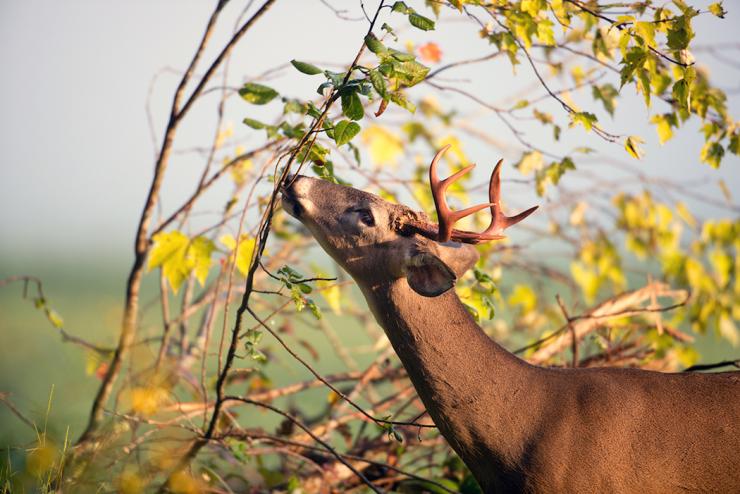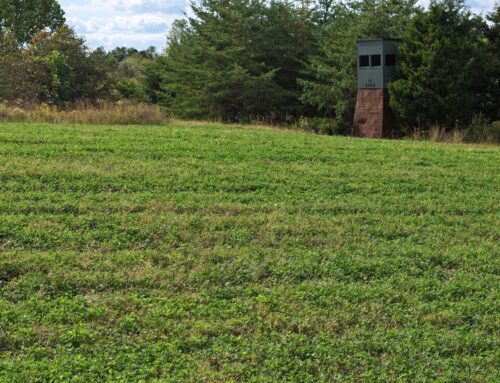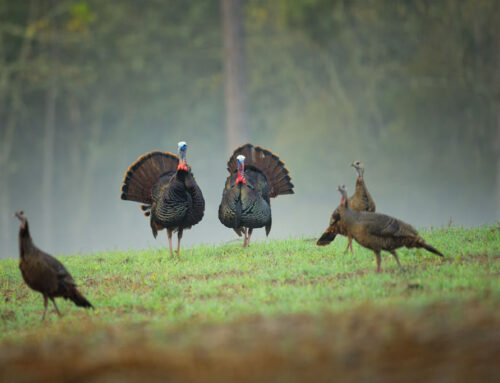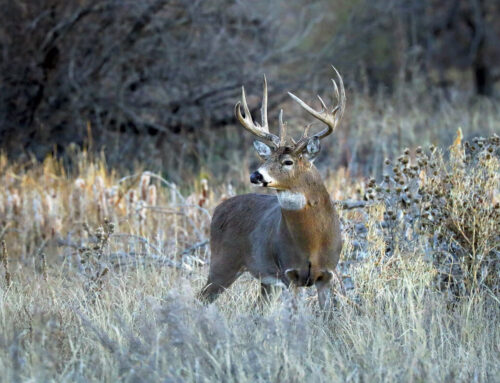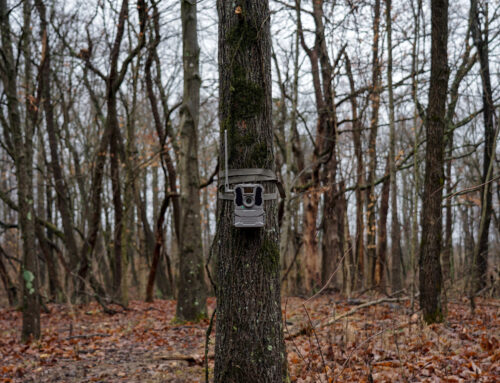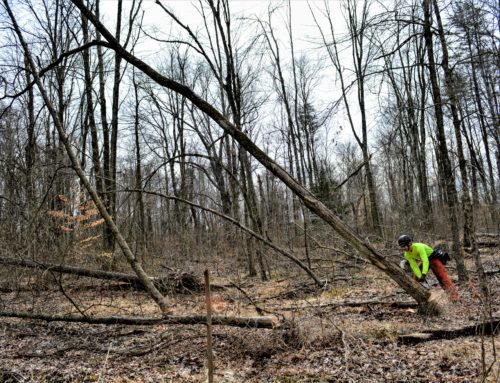Protecting Your Young Trees From Damage by Deer
White-tail deer wreak havoc on the health of young trees by browsing on their twigs and buds, and/or by rubbing their antlers against the main stem. These damages stress the trees, weakening them, and causing their health to slowly decline. These damaged trees then become less productive, grow with poor form, and/or die off. Whether you’re desiring to protect your newly planted trees or protect naturally regenerating trees, there are multiple options available to help control damage by deer. Deciding which option to protect your tree is best for you depends on the size of your local deer population, quantity of trees you’re wanting to protect, equipment available to you, your budget, and the time you’re willing to invest in the project.
Electro Fencing
Electro fencing consists of 3 basic components; posts (usually fiberglass rods), wire (can be bare wire, poly wire, or a poly tape), and the charging source. The idea behind using electro fencing is to frighten the deer away from the fenced area. The strands are often baited, with the idea that the deer licks the bait and are spooked away by the electric shock. To bait the line, bait cups can be used or something as simple as peanut butter in aluminum foil folded over the wire. It’s important to keep vegetation on either side of the fence low/clear to allow the deer better visibility of the fence. It is also recommended to routinely scout the fence’s perimeter to check for any downed tree limbs or branches on the line and make any repairs as necessary. Electro fences are great to use in fairly open areas but not as good to use in areas with tall, mature trees as fallen branches or limbs may cause continual damage thereby also allowing the deer a point of access to the protected area. Also, large trees are likely to shade the charger therefore hindering it from functioning properly. Fences should be at least 7 feet high otherwise the deer will be able to easily jump over it. Sometimes two rows of wire, about 3 feet apart, may be needed depending on how motivated the deer are.
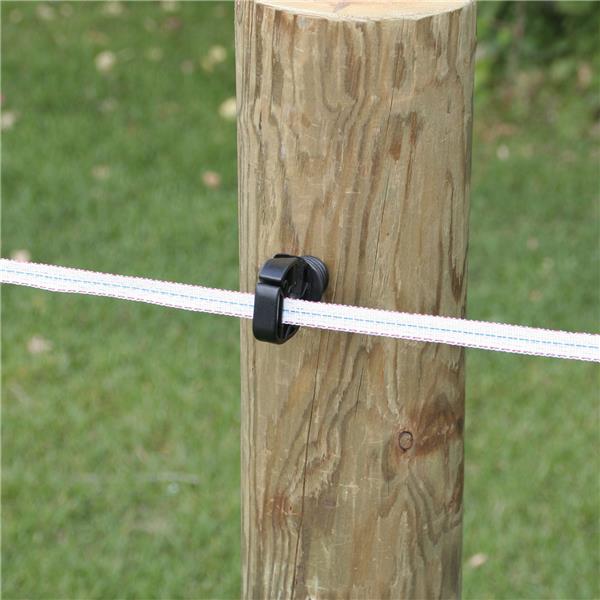
Woven plastic mesh fence
With this option, metal or wood posts are used as the framework, then plastic mesh is attached along the posts and along wire at the top and bottom of the fence. Stakes should also be used between poles to securely affix the mesh to the ground, otherwise deer can easily crawl under. It’s important to keep vegetation on either side of the fence low/clear to allow the deer better visibility of the fence. It is also recommended to routinely scout the fence’s perimeter to check for any downed tree limbs or branches on the line and make any repairs as necessary. It is also recommended to tie flagging between poles to make the fence more visible to the deer, in hopes of mitigating deer from running into it, getting stuck, and/or destroying the fence. This style of fencing may require more frequent repairs then other options as it is not uncommon for the deer to run into it or for other critters (such as rabbits) to chew through the fence. However, repairs can easily be made by patching the damaged spot with another small piece of mesh and zip ties. These fences should be a minimum of 7 feet high as well.

Wire tree cages
To assemble the cages, sections of wire fencing are cut and tied together using zip ties or wire, and then are attached to a stake (or two) to anchor the cage securely into the ground. This option may require less maintenance in comparison to the fence options, but it is not as efficient a protecting a large area or high quantity of trees. Eventually, the trees will grow and the deer may be able to nip the leaf ends of the tree, however, this damage wouldn’t be mortally wounding.
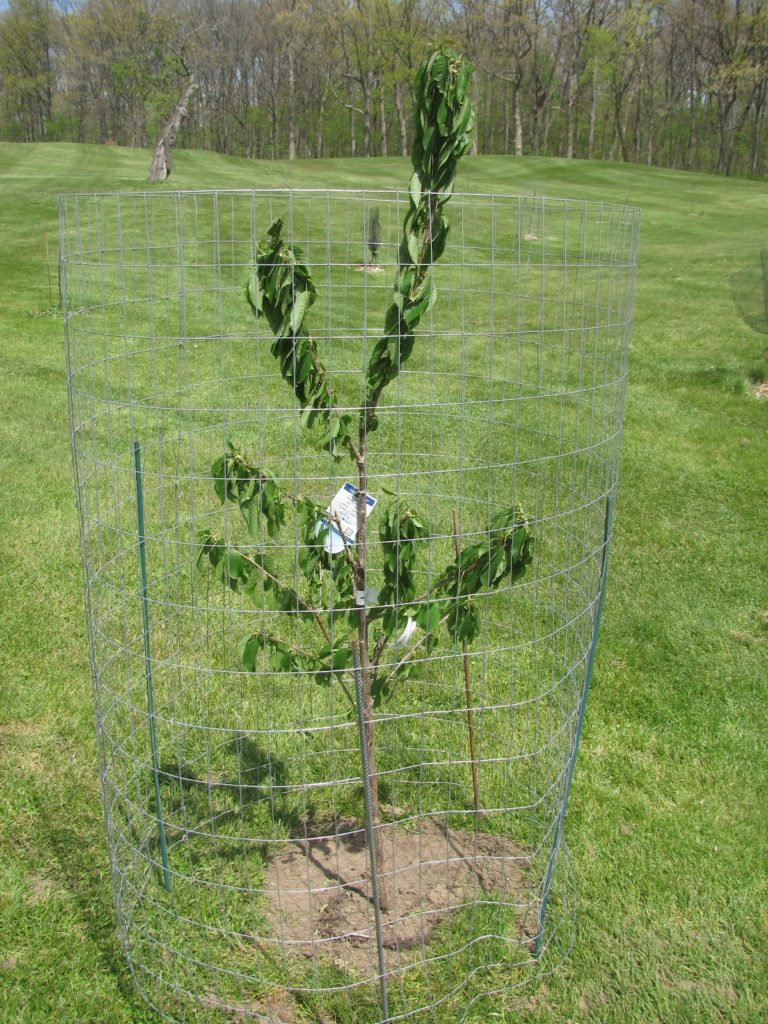
Tree tubes/shelters
There are a wide range of manufactured products in this category, in varying sizes, colors, and features. Some can be purchased pre-rolled and others require the purchaser to first roll up each tube. With this option, the tubes are placed over the tree and are supported with a stake which also serves to anchor it into the ground. The tubes also function to encourage upward growth, therefore is a good option to use for timber production plantings.

More information on our tree planting services: https://www.albertlandmanagement.com/forestry-habitat-management/tree-shrub-planting/
More information on protecting trees from deer: deer_fact_sheet.pdf (usda.gov)

